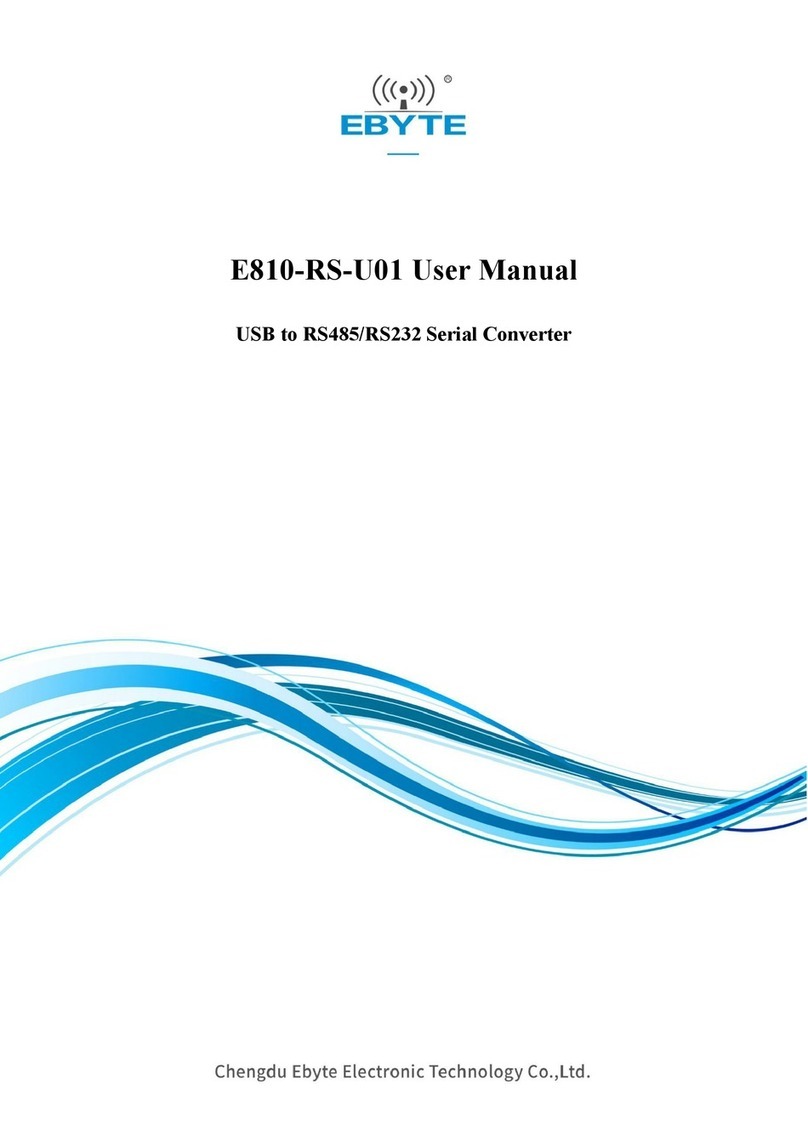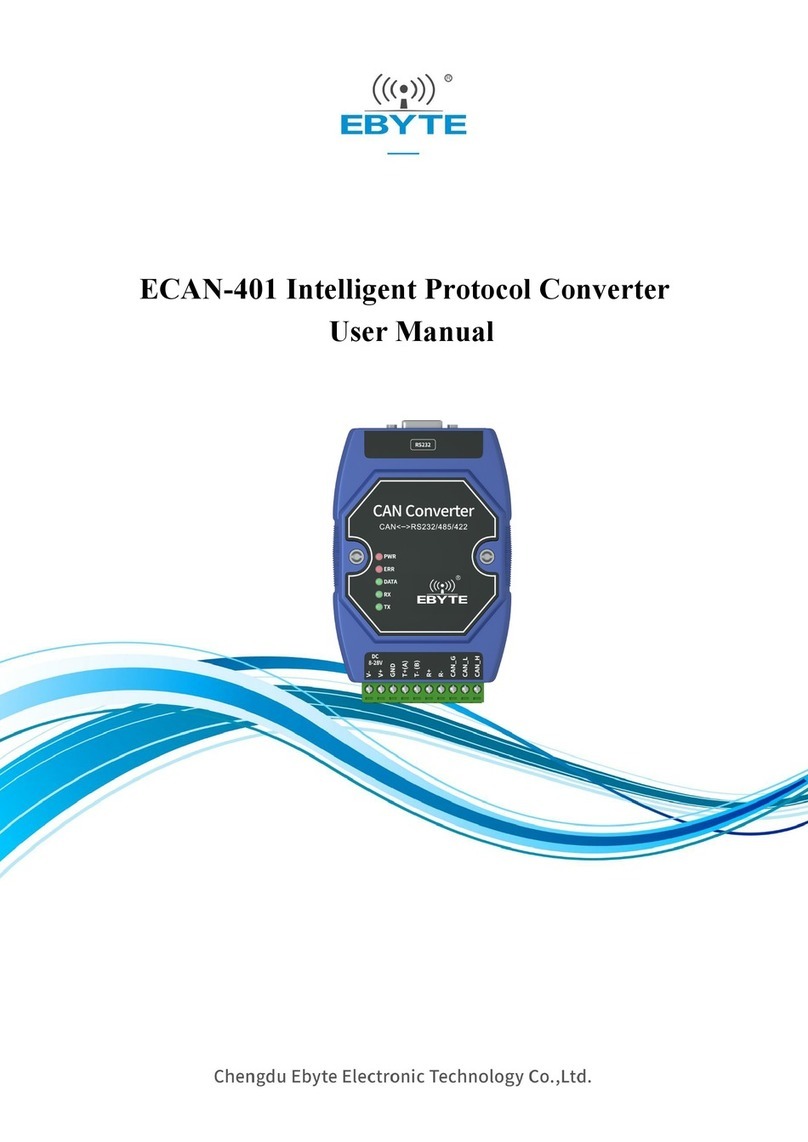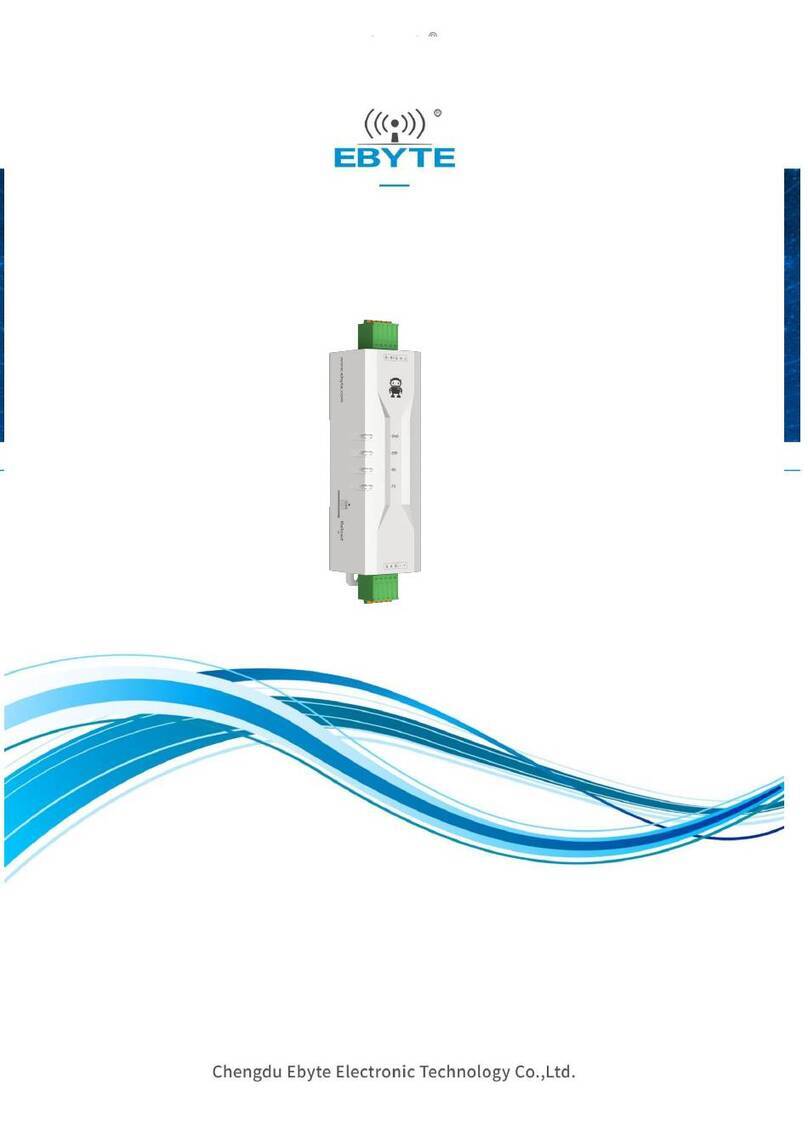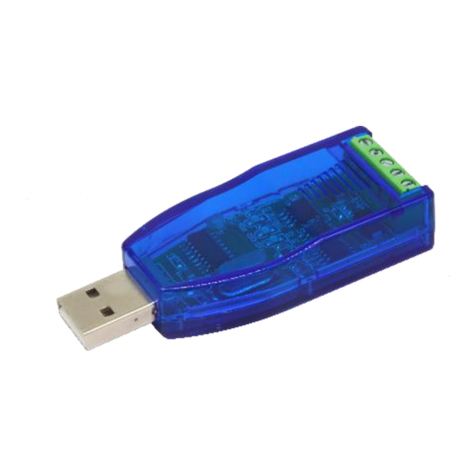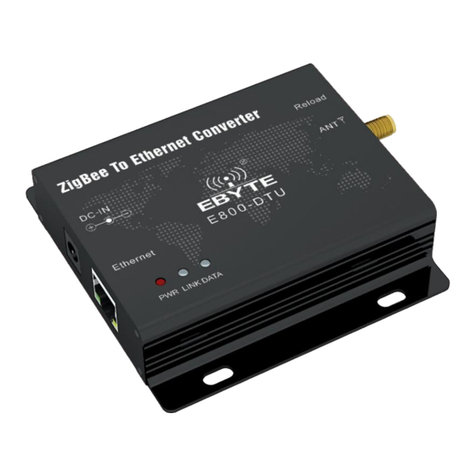
Chengdu Ebyte Electronic Technology Co.,LTD E810-DTU(CAN-RS485) User Manual
Copyright ©2012–2019,Chengdu Ebyte Electronic Technology Co., Ltd. 2
Contents
1. OVERVIEW..................................................................................................................................... 4
1.1 Brief Introduction........................................................................................................................................................... 4
1.2 Feature............................................................................................................................................................................. 4
1.3 Application...................................................................................................................................................................... 4
2. TECHNICAL PARAMETERS AND SPECIFICATION............................................................ 5
2.1 Basic parameter.............................................................................................................................................................. 5
2.2 Factory default parameter............................................................................................................................................. 5
3 HARDWARE DESIGN INTRODUCTION................................................................................... 6
3.1 Design introduction.........................................................................................................................................................6
3.2 Dimension....................................................................................................................................................................... 8
3.3 Connection method......................................................................................................................................................... 9
3.3.1 RS485 connection method.........................................................................................................................................9
3.3.2 CAN connection method......................................................................................................................................... 10
4 MODE INTRODUCTION.............................................................................................................10
4.1 Operating mode.............................................................................................................................................................10
4.2 Data conversion method...............................................................................................................................................10
4.2.1Transparent conversion mode...................................................................................................................................11
4.2.2 Transparent band information conversion............................................................................................................... 14
4.2.3 Protocol mode..........................................................................................................................................................17
4.2.4 Modbus mode.......................................................................................................................................................... 19
5 OPERATION INSTRUCTIONS...................................................................................................22
5.1 Entering Command Configuration Instructions....................................................................................................... 22
5.2 Command overview...................................................................................................................................................... 22
5.3 Command error code....................................................................................................................................................22












